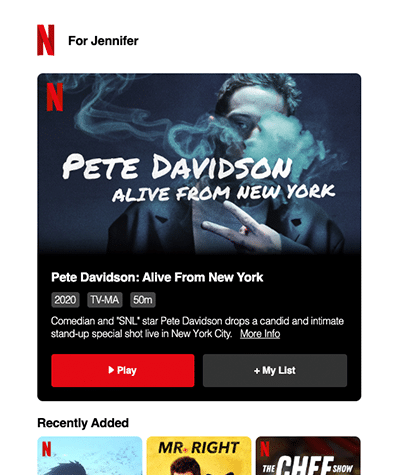What Are Kinetic Emails?
Mirroring a website experience right in an email allows users to take advantage of multiple interaction points and explore a host of product offerings. This creates the ease of use the modern consumer is looking for. Coupled with data-driven, hyper-personalization strategies, kinetic emails are a surefire way to increase engagement.
Why Are Kinetic Emails So Popular in Endemic Marketing?

Engaging Visuals
The basis of kinetic emails is providing the rich and engaging visual experience of a website all within the inbox. The coding techniques utilized by kinetic emails enable the creation and rendering of high-impact, interactive elements that are optimized with modern UX best practices.
Optimized Interactivity
Kinetic emails are built on a foundation of interactivity. Leveraging style templates that highlight featured content, animations, dynamic visuals, and search features allow marketing teams to create a website–like experience for customers without ever taking them out of their inbox. This gives consumers the freedom to explore and interact with a brand’s products, services, and information in a simplified and engaging way.
Inclusive Experience
Kinetic emails mimic the inclusive experience of visiting a brand’s website. The inclusion of digital elements and responsive content, i.e., interactive navigation buttons and collapsible menus, shoppable product listings, and search features, are considered rich user interactions. Integrating these elements creates a choose-your–own–adventure–like experience for consumers, enabling a more personalized experience that results in a rewarding brand interaction.
Inspire Curiosity

Data-Driven Personalization
Dynamic Elements
As with pretty much all endemic marketing, content plays a critical role in the dynamic elements of emails. Leveraging dynamic content and interactivity is crucial to garnering in-depth user information to tailor marketing messages. Marketing teams leverage the insights from customer interactions to serve up hyper-personalized suggestions for content, services, and product purchases throughout the customer‘s journey. Serving up relevant content in a dynamic way allows marketing teams to better understand consumer affinity towards certain products, services or topics.








